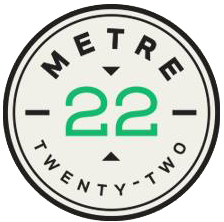
Watching the now World Champion Chicago Cubs make their run last fall was as exciting a time in sports as I can remember. I’ve attended some thrilling games at Wrigley over the years, but nothing compared to the experience of getting to attend Game 5 of the World Series on a crisp Sunday evening at the end of October. A few days later in Cleveland, the Cubbies completed their series comeback in an epic, roller-coaster game seven that included a 17-minute rain delay. Some have said that the delay is what gave the young Chicago team a chance to gather themselves, then step up in the 10th frame and win the Championship for the first time in 108 years.
During the Game 7 rain delay, the team met in a small room behind the dugout. Jason Heyward is credited with rallying the team, and many others reportedly spoke. They let their star closer Chapman, who had just given up a game-tying home run, know that the team – his team – was still behind him. Heyward reminded the team how good they were. Reminded them of their character. Then the rain stopped. And so did the 108-year championship drought. Cubs 8. Indians 7. Cubs Win.
A few weeks back, I picked up a copy of Tom Verducci’s recently released book, The Cubs Way. Verducci does a terrific job digging into how the winning Cubs team was built. It is a fascinating, inside look at how Cubs President Theo Epstein built the Cubs into World Champions, starting in the 2012 season. Epstein, his staff, and eventually manager Joe Maddon, who joined in 2015, followed a building process that is instructive for any leadership team in any organization trying to build a winning culture.
One revelation that struck a chord was the way Epstein established the guidelines for how they were going to build a winning team with the right culture … or, since the word culture is so overused in organizations, maybe it’s better to say the right character. What Epstein laid out was a philosophy that included finding building-block, everyday players to form the foundation for the character of the Cubs team. Epstein had his staff and scouts run comprehensive analytics on prospective players like he had done to great success when he was with the Red Sox. But more importantly, he also evaluated each individual’s character as much as his stats. Scouting reports became extended narratives, not only on the prospect’s baseball tools, but on his character tools as well. Pages were dedicated to things like adversities the player had faced on and off the field and how he handled them. Epstein had concluded that building a team with the right character was easier to do if he recruited players with the right character. This approach brought Rizzo and Bryant to the organization. It brought David Ross. And, it brought Heyward. Epstein and Maddon wanted a high performing team, but more importantly a high-performing team built with a character that wouldn’t blow itself apart into a collection of individual egos or internal finger pointing.
It may seem obvious that once a leadership team defines the kind of organizational character they are shooting for, they would take disciplined steps to seek out, recruit and screen for candidates that fit their intended culture. But few companies do. Even those with the intent to screen for character and cultural fit, often abandon those intentions when urgency rises like in times of fast growth or while selecting talent after a merger or acquisition.
Spending some time discussing the character-culture link among among your executive team can solidify your organization’s philosophy on the topic. Here are three questions to discuss among your leadership team that can help your organization chart its course.
- What kind of corporate culture (i.e., organizational character) do we desire to build and how will that character manifest itself in our behaviors as we interact with each other, with customers, with investors and with our community?
- For our critical “position players,” what character traits need to exist in the individuals we recruit or select for us to operate as an organization the way we envision?
- What specific processes and tools can we use to help us match our desired organizational character with the individuals’ character that will help us build our winning team?
We think these questions are great discussion starters for your next strategy offsite. (READ MORE about how to make your next strategy offsite effective).
What about your organization? Do you screen for character-culture fit? If so, has it yielded benefits? Send us your comments. We’d love to hear your perspective.
